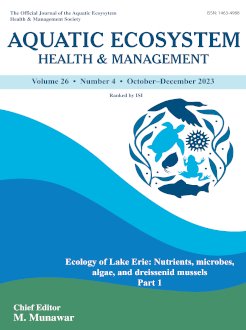Over the past two decades, western Lake Erie has experienced recurring summer cyanobacterial blooms that pose severe negative impacts on human, animal, and ecological health. Previous research has identified a strong correlation between annual cyanobacterial bloom intensity and preceding spring (March-July) phosphorus loading from the Maumee river, the largest tributary to western Lake Erie, which is used to predict upcoming summer bloom severity. Maumee river spring phosphorus load, however, does not explain all the variation of bloom severity between years. Considering additional environmental parameters may help to better capture the physical and biogeochemical processes that regulate bloom severity, eventually leading to improved cyanobacterial forecasts which serve as an early warning for Lake Erie stakeholders. We aggregated various environmental parameters that may influence western Lake Erie cyanobacterial blooms to examine these factors as potential predictors for annual bloom severity. These included nitrogen and phosphorus loading from the Maumee river, freshwater discharge from the primary rivers and tributaries (Detroit, Huron, Raisin, Maumee, and Portage rivers), seasonal lake surface water temperature (mean winter, spring, and summer temperature), and Lake Erie winter ice extent and duration from 2002-2022. Empirical model results show that spring phosphorus loading, as total bioavailable phosphorus, from the Maumee river remains the dominant environmental factor controlling cyanobacterial blooms. However, additional environmental factors, such as Maumee river winter phosphorus loads and Lake Erie winter ice extent and timing, are likely important in modulating bloom severity, particularly in years with moderate phosphorus loads. Finally, we suggest incorporating mechanistic or rule-based models, in addition to empirical models, to better understand and predict annual cyanobacterial bloom severity. The updated models not only improve seasonal forecast accuracy which provides advanced warning of bloom severity to Lake Erie stakeholders, but also helps identify which factors we can better manage to reduce the frequency of severe blooms.
How to translate text using browser tools
29 May 2024
Nutrient and environmental factors regulating western Lake Erie cyanobacterial blooms
Hounshell A.G.,
Johnson L.T.,
Stumpf R.P.
ACCESS THE FULL ARTICLE
empirical modeling
Great Lakes
harmful algal blooms
phosphorus
winter ice-cover





